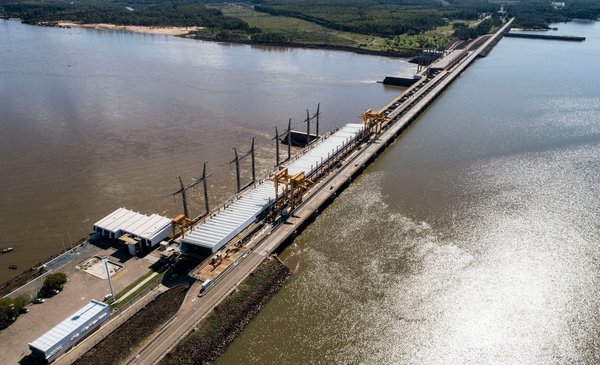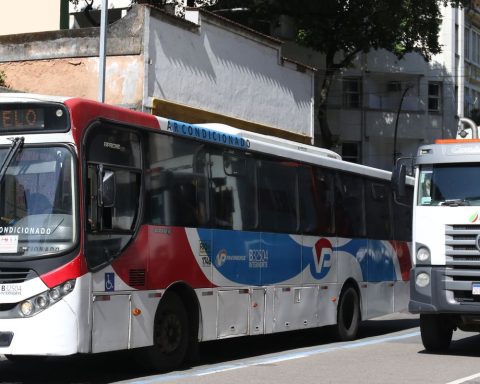Since June of last year and week after week without exception, a minimum of 200 people meet every Saturday in the Plaza Artigas de Salto. There they systematically demand that the State take charge of a debt that is on its way to fulfilling half a century. They are the workers who, starting in 1974, participated in the construction of the Salto Grande Hydroelectric Dam, and who denounce that at the time they were fired without any type of compensation, in addition to claiming for other labor credits that were never paid for an express decision, they say, of the dictatorship, which diverted the funds that were intended for that purpose.
This is a historical claim, which has become a common issue to be resolved in each parliamentary term. In the last four legislatures there was at least one project and they all had the same end: the archive. The matter was put on the table again in the Labor Legislation Commission of Deputies, after a proposal presented in the middle of last year by the deputy Rodrigo Albernaz (Town meeting). The text, which also bears the signature of Omar Estévez (Colorado Party) and Álvaro Lima (Frente Amplio), expressly asks the Executive Branch for a reparation law to financially compensate those involved. The claim goes through the payment of dismissals, compensatory francs and overtime that were not settled 42 years ago.
The testimonies provided in Parliament are conclusive. The company contracted at the time for the work, an Italian multinational, left the money to pay everything. The money was diverted to the state coffers and ended up being liquefied in General Revenues.
The problem originates in 1978, when a dictatorship decree determined the “end of the works” in Salto Grande, which actually ended in 1983. It also annulled the payment to the Uruguayan workers who worked there, determining that they were not entitled to dismissal. It was not the case of foreigners, who collected everything in a timely manner.
That year, the ex-front party deputy Carlos Texeira, who acted as a lawyer in the lawsuit filed by the workers, was ordered to drop the case under the threat of reprisals. Several governments passed and, in 2006, the group decided to organize to claim what they consider to be theirs. In 2009, the possibility began to be discussed, at the proposal of the former workers, of installing a toll in Salto Grande in order to obtain the money to pay the debt.
It began to work in 2013 and continues to do so, but, also in this case, The proceeds went to other purposes. The Mixed Technical Commission refers him to various supports for sports clubs and social institutions. This was recalled last week in the commission by one of the group’s referents, Mario de los Santos, who, like Deputy Albernaz, is now betting on the response of this government.
The former workers maintained contacts with the secretary of the Presidency, Álvaro Delgado who, according to De los Santos, undertook to “put in a technical team” to start working on the project. He also said that the Minister of Labor, Pablo Mieres, promised to “put head” to come up with a solution. In one of his recent visits to Salto, they were able to deliver a letter to President Luis Lacalle Pou, who “He was willing to install a dialogue.”
there must be answer
The primary intention is that, through a reparatory law, the State recognizes the debt and takes the corresponding actions. Albernaz recalled in this regard that this is an issue that has been used politically in all electoral campaigns and he trusts that now, finally, there will be a solution. “No one can say that it is not a fair claim”, said. “Clearly, whoever bears the responsibility is our elected government. Everything rests, mainly, on the figure of our president.”
The solution must necessarily come from the Executive Power, which has exclusive initiative in the matter. In his project, the deputy lobbyist suggests that, since Salto Grande “can handle at its discretion” large amounts of money resulting from a work of which these former workers were “part of its essence”, it would be an important source to pay off the debt.
It is estimated that the solution should comprise just under 2,000 people. About half have already died, so the repair would be charged by their relatives. .Albernaz recalled that, in the year of meetings in the square, “We have fired and made minutes of silence for a significant number of former workers.” Of those who remain alive, the youngest is 74 years old. The answer, both in one direction and in the other, should come this year. The contacts that he has maintained with the government allow the deputy to be optimistic. “They could have told me yes or no, and the no is not there yet,” highlighted.
Economic debt is almost impossible to determine. Report requests made to the Social Security Bank have not been conclusive, so everything is based on estimates.
When consulted, Albernaz maintained that, if it were assumed in its entirety, the amount to be paid could reach US$ 100 million. But since legally the claims for labor credits prescribe after five years, the deputy considered that the definition of the debt will be political. Albernaz then spoke of a “symbolic payment.” The figures handled by legislators are between US$15 million and US$20 million.
A crack will mark
The commission is now waiting to receive the position of the Salto Grande Mixed Technical Commission, which must appear in Parliament. In addition to Albernaz, other members of Cabildo Abierto shouldered the claim. Deputy Martín Sodano warned that the Salto Grande dam is the most important work that UTE has, which obtains 43% of the electricity it generates in this way. Thus, he wondered why the company does not cover at least a percentage of the debt with the former workers with what it collects from the sale of energy abroad.
“There is a crack here that the de facto government left marked” Sodano warned as he called to find a solution. “You must not turn your back on the workers at any time,” he claimed.
A reparation project similar to the current one had been presented in 2010 by the nationalist deputy Rodrigo Goñi, who at the time recalled that the Social Welfare Bank had decided at that time to readjust the pension amounts of the former workers of Salto Grande, determining that in At the time, the corresponding contributions had not been made for all the compensatory items, which harmed the assets of these beneficiaries.
In Goñi’s opinion, this constituted another piece of evidence that supported the already historic claim of the workers. According to what Albernaz now affirms, today they charge an average of $16,000 per month for passivity, for which he suggested an alternative. “A substantial adjustment of their pensions would be very well received by them”he pointed.
In 2006, the Broad Front had presented another similar project, which also ended without resolution. At that time, the left-wing caucus had consulted the former Colorado Minister of Labor, Hugo Fernández Faingold, who agreed with the information: the money had been deposited to pay the labor credits had been deposited by the construction company upon completion of the works, but it was transferred to General Revenue.


















